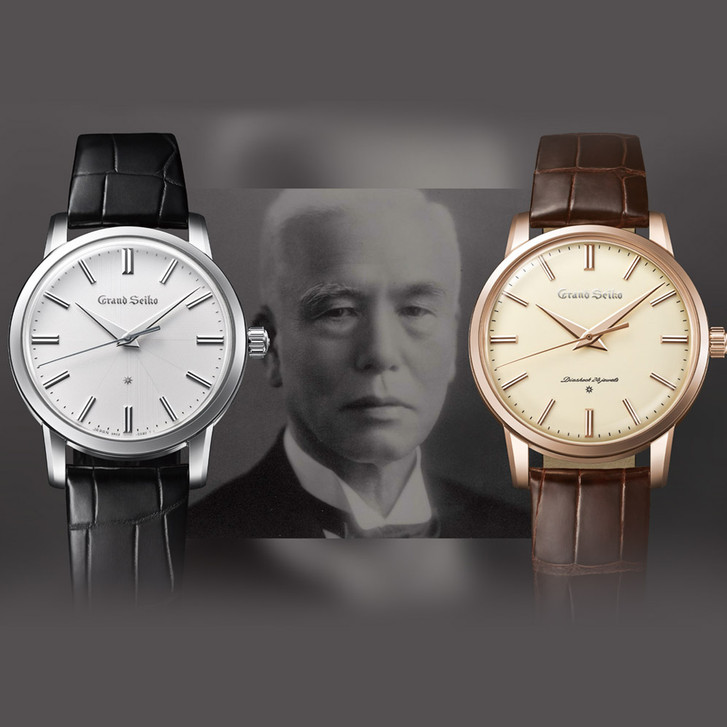In the heart of Japan, in Ginza, Tokyo, Kintaro Hattori was born in 1860 under the shade of massive industrial, social, and economic changes. After more than two centuries of self-imposed isolation, Japan finally took to the world stage, bringing in new opportunities, technologies, and even people from outside to this beautiful country.
Training for Bigger Challenges Ahead
Born in a family of well-established merchants, he wasted no time and started his technical and commercial training at the age of thirteen and a year later found himself under the internship of Kameda Clock Shop. This is where his love for timepieces grew even more.
Wall Clock, Timepiece, and Neo-time
Mr. Hattori gradually realised the importance and place of Japan in the new world as he grew up and quickly grabbed the opportunity. Establishing his first company at the age of 21, Mr. Hattori started dealing with Swiss firms based in Yokohama and learned the craft and marketing of timepieces. However, it wasn’t until 1892 when he started manufacturing wall clocks from his recently set up Seikosha Factory, the first and only factory in Japan at that time. His efforts were successful, as his timepieces gained popularity all over Japan. But his thirst for more brought him more fame than ever.
Timekeeper – the King of Watches in the East
After his initial success in Japan, he went to Europe, gathering knowledge about tools, equipment, techniques, and everything there is to know about modern watchmaking. This helped him open an exclusive store in Ginza with the addition of a brand-new pocket watch known as Timekeeper. The Timekeeper watch line was met with even greater praise than any of his previous accomplishments. Following his great success in the watchmaking world, Mr. Hattori expanded his business to Shanghai and Hong Kong, which gained him the title – The King of Watches in the East.
By 1913, Mr. Hattori’s timepieces had garnered much attention both in Japan and overseas. And this was also the year when his company created the first wristwatch, Laurel.
Seikosha Suffers a Setback
During 1923, the factory and offices built upon years of handwork and success were claimed by a devastating mix of fire and the Great Kanto Earthquake. Almost all timepieces were either damaged or completely lost due to those calamities. However, disciplined as he was, the founder immediately started creating his foundation from scratch.
He gained public trust and support by replacing almost all clocks and watches that were sent for repair but were damaged by the fire, free of charge. By doing this, he not only gained public trust but also gained a loyal customer base.
And Seiko Was Born
Not even a major setback was enough to dwindle Mr. Hattori’s faith. He returned with a rebranding of his company name, Seiko. A company that revolutionised watchmaking by introducing the first Quartz movement, a reason that it is found in the form of wristwatches on so many wrists today.
The Quartz Movement
Quartz watches or clocks use an electronic oscillator that is regulated by a Quartz crystal to follow time as per the natural day and night cycle. Seiko adopted this new technique over the traditional one, starting the first Quartz movement in wristwatches. This made Seiko a renowned name all across the world, making it immortal across time.
Philanthropy and Later Life
In the 1930s, Mr. Hattori founded the Hattori Hokokai Foundation that provides scholarship and support to public work even to this day.
Don’t Hurry, Don’t Stop
One of the quotes said by Mr. Hattori himself truly resonates with his personality. Not only did his genius create a reliable timekeeping habit, but he left behind a legacy that would take generations to stop. As for the visionary himself, the clock stopped ticking during the year 1934, but not the timepieces he crafted for everyone else, so “Don’t hurry, don’t stop.”
In 2007, author Brian Selznick published a book called The Invention of Hugo Cabret. In 2011, Martin Scorsese made a 3D film called Hugo based on it. In it, you could easily draw many parallels between that young boy and the growing years of Kintaro Hattori. As if, the latter’s passion, dedication, and understanding of the tiny machinery in its intricate details sort of went on-screen to show us what geniuses are made of.
Commemorating the legend’s incomparable legacy on his 160th anniversary, Seiko released a short video last year – ‘Follow your dreams and keep moving ahead, no matter what challenges you face”, echoes the philosophy of Mr. Hattori to this day.

 $ US Dollar (USD)
$ US Dollar (USD)
 Singapore Dollar (SGD $)
Singapore Dollar (SGD $)
 Thai Baht (THB ฿)
Thai Baht (THB ฿)
 Euro (EUR €)
Euro (EUR €)
 British Pound (GBP £)
British Pound (GBP £)
 Swiss Franc (CHF Fr.)
Swiss Franc (CHF Fr.)
 Australian Dollar (AUD $)
Australian Dollar (AUD $)
 Canadian Dollar (CAD $)
Canadian Dollar (CAD $)
 Indian Rupee (INR ₹)
Indian Rupee (INR ₹)
 South Africa Rand (ZAR R)
South Africa Rand (ZAR R)
 Swedish Krona (SEK kr)
Swedish Krona (SEK kr)
 New Zealand (NZD $)
New Zealand (NZD $)
 Danish Krone (DKK kr)
Danish Krone (DKK kr)
 Norwegian Krone (NOK kr)
Norwegian Krone (NOK kr)
 UAE Dirham (AED د.إ )
UAE Dirham (AED د.إ )




































